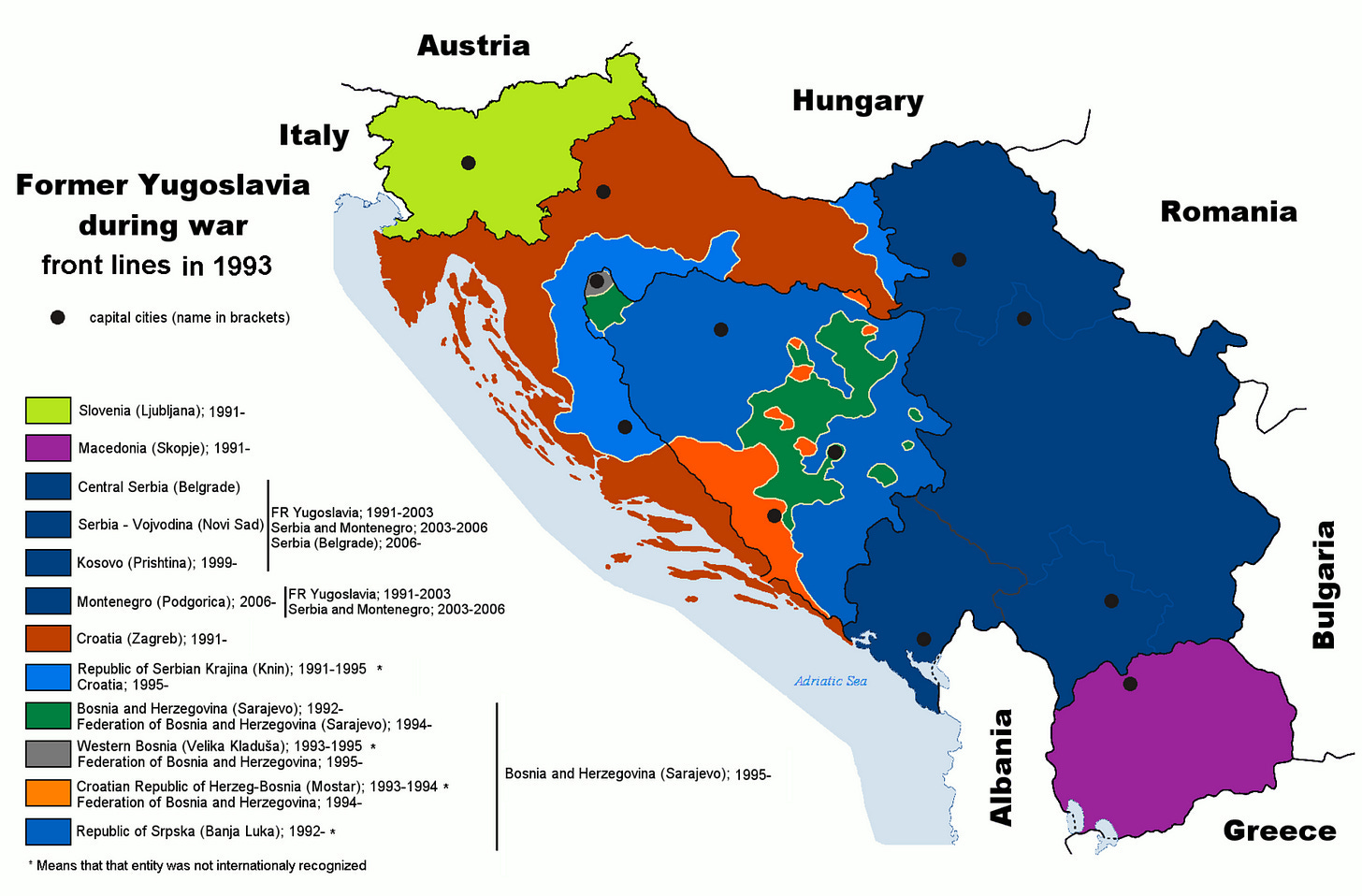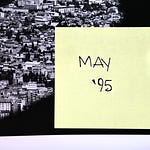July 1993.
In the midst of armed clashes in Central and Eastern Bosnia, a high-level political dialogue has begun between Serbia and Croatia [you can listen to the latest episode of BarBalkans - Podcast here].
The Serbian President, Slobodan Milošević, and the Croatian President, Franjo Tuđman, agreed on a plan for the ethnic division of Bosnia. This plan dates back to 1991, but this time it has made it to the next level.
Milošević and Tuđman officially presented the proposal to divide Bosnia and Herzegovina into three ethnically homogeneous States at the Conference for the Former Yugoslavia’s session of June 16.
The international community is seriously beginning to take the proposal into consideration. This is the final tombstone on the Vance-Owen Plan for peace in Bosnia.
Sarajevo kept in check
The President of Bosnia and Erzegovina, Alija Izetbegović, left Geneva displeased with the Milošević-Tuđman proposal and reserving the right to give his last word after a consultation in Sarajevo with the collective Presidency.
Without too many surprises, the proposal is rejected by the Bosnian Presidency on July 9.
However, Izetbegović faces a particularly complex situation in Sarajevo, both politically and socially.
More than a year of war in Bosnia has created two factions: one moderate - willing to compromise with Serbs and Croats - and one nationalist - calling for Izetbegović resignation.
In order to defend himself from the nationalists, the Bosnian President accentuates the radical character of his policy, even beyond his own temperament.
Moreover, Sarajevo is increasingly kept in check during the siege that is going on since April 1992. The population is now without food, drinking water, electricity and gas, and Miljacka River is filled with rotting corpses.
On July 8, the UN High Commissioner for Refugees, Sadako Ogata, denounces Ratko Mladić’ Army for blocking UNHCR convoys carrying the fuel needed to run water pumps in the city.
Terror also runs through the streets of Sarajevo by the hand of criminal gangs led by the commander of the 10th Mountain Brigade, Musan Topalović-Caco, and the commander of the 9th Mountain Brigade, Ramiz Delalić-Ćelo. Their main victims are the Bosnian Serb and Bosnian Croat citizens who remained inside the besieged city.
While the tragedy of the siege of Sarajevo continues, on July 7 the G7 Summit starts in Tokyo.
Compared to the Summit of the European Community in Copenhagen at the end of June, the leaders of the seven most industrialized countries in the world decide to take a step back. They state that they will not accept any territorial partition of Bosnia imposed by force on Bosniaks (the Bosnian Muslims).
This is the usual request to de-escalate the tensions, with no real impact on the ground. And this is not an intransigent position.
Meanwhile, several Member States of the Organization of Islamic Conference - Algeria, Bangladesh, Indonesia, Malaysia, Morocco, Pakistan and Turkey - create even more instability, as they send 18 thousand soldiers to support Bosniaks (mainly for propagandistic reasons).
A new Plan on the horizon
The G7 statement is not really closed to compromise. This is shown by the developments of the new round of negotiations at the Conference for the Former Yugoslavia in Geneva, between July 27 and 30.
The Conference is co-chaired by the European Community negotiator for the former Yugoslavia, David Owen, and the Special Representative of the UN Secretary General, Thorvald Stoltenberg.
The two co-chairs of the peace negotiations immediately take note of Izetbegović’ radical change of position. In less than a month, the Bosnian President has switched from the strong defense of a multi-ethnic, multicultural and indivisible Republic, to accepting an ethnically dismembered Bosnia.
This change is due to weeks of defeats for the Army of the Republic of Bosnia and Herzegovina in Mostar, Banja Luka, Brčko, Goražde and Žepče.
The Bosnian Serb troops have successfully cut the connections between Sarajevo, Foča and Goražde, and have created a corridor between the territories in Herzegovina and Northeastern Bosnia.
«I hope that no one will blame me, if this time I make an effort to find a solution for the Muslim people, who are the most affected by the war», President Izetbegović bitterly comments before starting the negotiations in Geneva.
On July 30, the Bosnian President accepts the informal compromise by Owen and Stoltenberg, which already seems like a new plan for peace in Bosnia.
This is clearly based on the Milošević-Tuđman proposal. Bosnia and Herzegovina is dismembered on an ethnic basis, but the tricky definition “Union of the Republics of Bosnia and Herzegovina” does not solve the question of whether the country should become a federation or a confederation.
It is clear that Bosnian Serbs and Bosnian Croats are the winner and Bosniaks have to take the crumbs.
But several issues are still unsolved: the extent of territory controlled by Bosniaks, the destiny of Muslim enclaves in Eastern Bosnia, the status of Sarajevo, and access to Sava River and the Adriatic Sea.
It is obvious - but apparently not to the negotiators - that the new peace plan on the horizon is already born crooked.
If you know someone who can be interested in this newsletter, why not give them a gift subscription?
Here is the archive of BarBalkans - Podcast:
And here you can find a summary of the past years:


















Share this post